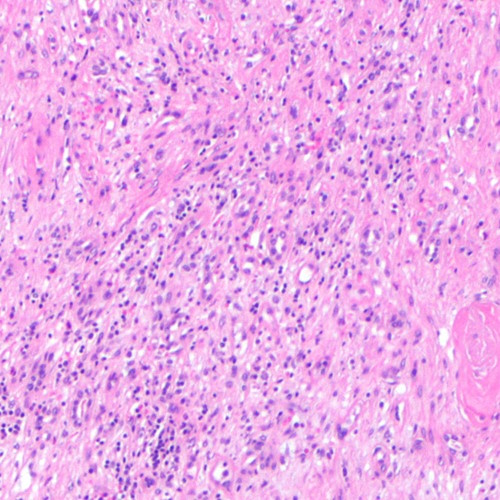Inflammasomes are hidden guardians within our cells, constantly on the lookout for threats like infections and cellular damage. These protein complexes act like alarm bells, triggering the immune system's response when danger arises. They do this by releasing inflammatory signals, which recruit immune cells to fight the intruders and repair the damage.
However, this inflammatory response can be a double-edged sword. While it's crucial for fighting off infections, an overly zealous response can contribute to chronic diseases like heart disease and even Alzheimer's. It's like a fire alarm that keeps alerting even after the fire is out, causing unnecessary damage.
Recent research has shed light on these complex roles of inflammasomes in various diseases. In infections, they play a vital role in sounding the alarm and calling in the immune troops. But in chronic conditions, their overactive alarm bell can lead to inflammation that harms healthy tissues instead of healing them. Understanding this delicate balance between helpful and harmful inflammation is key to finding new treatments.
Inflammasomes in Health and Disease
Inflammasomes, once considered solely immune sentinels against pathogens, have emerged as pivotal players in a vast array of human diseases. These intricate protein complexes trigger inflammatory responses, wielding a double-edged sword that can both defend against threats and, in excess, inflict collateral damage. Let's explore their critical roles across some of the most challenging medical landscapes:
Cardiovascular Diseases: Inflammasome activation fuels chronic inflammation in atherosclerotic arteries, accelerating plaque buildup and heart attack risk. In heart failure, their overactivity impairs the heart's pumping function, contributing to progressive muscle weakening.
Neurological Disorders: In Alzheimer's, inflammasomes induce neuroinflammation, potentially promoting the accumulation of harmful amyloid plaques and tau tangles in the brain. Similarly, in Parkinson's, they may contribute to neuronal cell death through inflammatory processes.
Metabolic Disorders: Inflammasome activity in adipose tissue and pancreatic beta cells drives chronic inflammation, impacting insulin sensitivity and contributing to type 2 diabetes development. In obesity, this inflammatory signature also plays a role in metabolic dysregulation.
Respiratory Diseases: In chronic obstructive pulmonary disease (COPD) and asthma, inflammasomes exacerbate airway inflammation, causing breathing difficulties and exacerbations. Understanding their role in lung inflammation could lead to novel therapeutic strategies.
Gastrointestinal Diseases: In inflammatory bowel disease (IBD), inflammasome activation fuels gut inflammation, driving tissue damage and contributing to disease progression. Targeting these inflammatory pathways holds promise for improved IBD management.
Autoimmune Disorders: In rheumatoid arthritis, inflammasome-driven inflammation coordinates the joint destruction observed in this chronic autoimmune disease. Inhibiting inflammasome activity could potentially revolutionise treatment approaches.
Cancer: Inflammasomes exhibit a paradoxical role in cancer, acting as both tumor suppressors and promoters. In some cancers, they can trigger anti-tumor immune responses, while in others, they can promote tumor growth and invasion. Understanding these opposing roles is crucial for developing effective cancer therapies.
Infectious Diseases: While essential for combating pathogens, inflammasome overactivation in response to infections can lead to excessive inflammation and tissue damage. Targeting inflammasome signaling in specific contexts could prove beneficial in managing certain infections.
New Strategies to Control Inflammasomes
Our tiny cellular guardians, can sometimes turn into fire alarms, triggering excessive inflammation that fuels a diverse range of diseases. But a revolution is brewing in the scientific world, with innovative strategies emerging to tame these overactive alarms and bring relief to millions. Let's explore some of the exciting approaches being developed to target inflammasomes and restore health:
Silencing the NLRP3 Alarm:
NLRP3, a specific type of inflammasome, plays a key role in diseases like gout, where it fuels painful crystal deposits in joints. Type 2 diabetes and atherosclerosis, the underlying cause of heart attacks and strokes, also benefit from NLRP3's silencing. Scientists are designing small molecule inhibitors, like tiny molecular locks, to fit and disable NLRP3, preventing it from triggering inflammation. Additionally, biological drugs, engineered proteins that mimic natural inhibitors, are being developed to specifically target and neutralise NLRP3.
Calming the Downstream Cascade:
ASC, another component of inflammasomes, and caspases, enzymes involved in inflammation and cell death, stand downstream of NLRP3. By targeting these molecules, we can dampen the harmful inflammatory cascade triggered by overactive inflammasomes. This approach holds promise for diseases like Alzheimer's, where chronic inflammation damages brain cells. Scientists are exploring ways to develop drugs that bind to ASC or inhibit caspases, preventing them from contributing to neurodegenerative processes.
Quieting the Cytokine Storm:
IL-1 and IL-18, pro-inflammatory cytokines produced by inflammasomes, are like alarm bells blaring throughout the body, recruiting immune cells and fueling inflammation. In autoinflammatory syndromes, marked by recurrent episodes of fever, rash, and joint pain, these cytokines run amok. Therapies that inhibit IL-1 and IL-18 are already available, offering relief to patients by silencing the cytokine storm triggered by inflammasomes.
Rewiring the Inner Ecosystem:
Our diet and gut microbiome can significantly influence inflammasome activity. Imagine the gut as a bustling marketplace where food fuels the activity of different "vendors" (microbes). Certain dietary choices, like reducing sugary and processed foods, can tip the balance in favor of "friendly vendors" that produce anti-inflammatory molecules, calming the inflammasomes. Additionally, probiotics and prebiotics, which nourish beneficial gut bacteria, can further modulate inflammasome activity, potentially helping with metabolic and inflammatory diseases.
These are just some of the exciting avenues scientists are exploring to target inflammasomes. By silencing their overactive alarms, we can potentially unlock a future where a range of diseases, from gout and diabetes to Alzheimer's and autoinflammatory syndromes, become more manageable, offering hope for a healthier tomorrow.
Credits
The research behind these findings was conducted at several institutions, including Capital Medical University. The findings are published in Signal Transduction and Targeted Therapy, part of the Nature group of journals.






